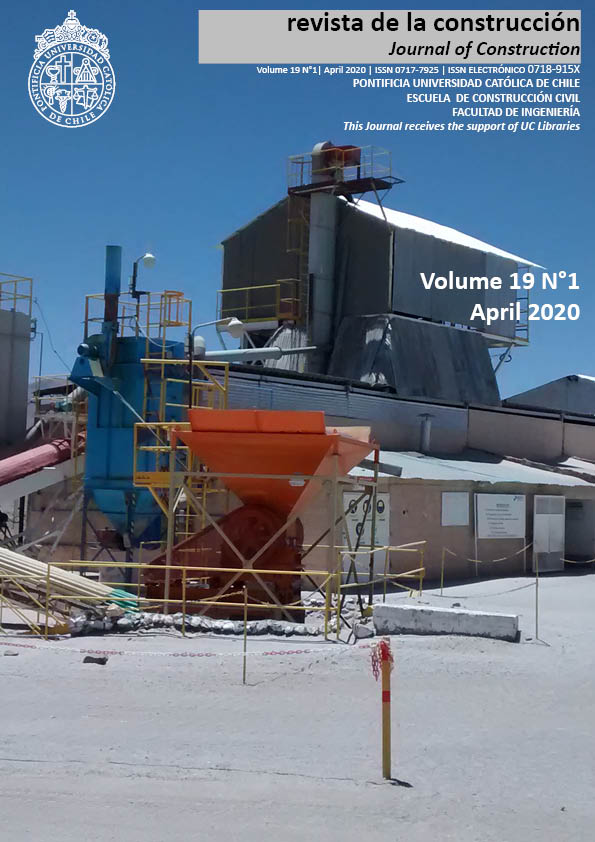A comparative study on prediction models for strength properties of LWA concrete using artificial neural network
DOI:
https://doi.org/10.7764/RDLC.19.1.103-111Keywords:
Sintered Fly ash aggregate, ANN, algorithm, variables, regressionAbstract
In this study, Artificial Neural Network (ANN) model is constructed to predict the compressive strength, split tensile strength and flexural strength of lightweight aggregate concrete made of sintered fly ash aggregate. An empirical relationship between the compressive strength, split tensile strength, and flexural strength was developed and compared with that of experimental results. The models were formulated based on results obtained from laboratory experiments. The variables considered in the study are the quantity of cement and water-cement ratio. Feed forward neural network and Levenberg-Marquardt back propagation algorithm were used for training algorithm in ANN. Amongst the total data, approximately 70% of the data was considered for training, 15% for testing and the remaining 15% has been considered for validation. The developed models had more accuracy with minimum error and had a higher correlation with the correlation coefficients of 0.916 and 0.955 were obtained for the training and testing data of compressive strength prediction, 0.949 and 0.937 respectively for split tensile strength prediction, 0.926 and 0.928 respectively for prediction of flexural strength. The models were compared with the experimental data’s, and the results were discussed.
Downloads
Downloads
Published
How to Cite
Issue
Section
License

This work is licensed under a Creative Commons Attribution-NonCommercial-NoDerivatives 4.0 International License.








